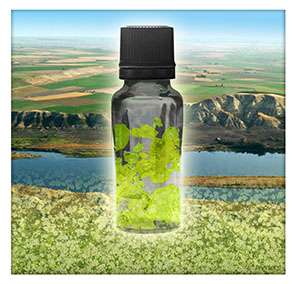Uranium poses a serious risk of groundwater contamination at the Hanford Site. But most previous experimental studies addressing this important issue were performed over short-time periods, focusing on the uranium that is quickly released from sediments to groundwater. This study combines modeling and laboratory experiments to assess uranium release under flow conditions over a time period long enough to evaluate the transport behavior of all of the uranium in sediment samples collected from the Hanford Site.
The study reveals fundamental processes and parameters controlling long-term uranium transport and shows that release of this contaminant slows down with time, suggesting that remediation strategies should take into account both short-term and long-term migration behavior. The findings will enable scientists to construct more accurate models for assessing the risk of groundwater contamination by uranium at the Hanford Site.
Researchers from Pacific Northwest National Laboratory conducted a long-term study of uranium desorption—the release of uranium from sediments to groundwater—under flow conditions using sediments collected from the Hanford Site in southeastern Washington state. The experiments lasted more than four months, which was long enough to deplete all or most of the uranium in the sediments. The researchers evaluated two models using data collected from two columns that were first packed with sediments containing either small (<2 mm) or large (<8 mm) grains and then slowly injected with water. The generalized composite (GC) model is easier to use because it involves fewer parameters, whereas the grain size-based component additivity (GSCA) model incorporates data about the spatial distribution of different grain sizes in field sediments and thus can be used to predict uranium desorption at a specific field site. The researchers examined sediment structure using X-ray tomography at EMSL.
They found that both the GC and GSCA models were effective at estimating uranium desorption over short-time periods. But when the models were calibrated with data from short-term experiments, they were not accurate over the long term because uranium release slowed down with time. Moreover, there was a significant degree of uranium release from sediments containing large grains, which are typically ignored because they have a smaller ratio of surface area to volume compared with smaller grains, even though they make up a larger fraction of field sediments than smaller grains at Hanford and other sites. Taken together, the findings suggest that models should consider uranium release over both short- and long-time periods and take into account the effect of large grains because they are an important source of uranium release.
More information: Shang, J., Liu, C., Wang, Z., and Zachara, J. "Long-term kinetics of uranyl desorption from sediments under advective conditions." Water Resour. Res. 50, (2014). DOI: 10.1002/2013WR013949
Provided by Environmental Molecular Sciences Laboratory
























